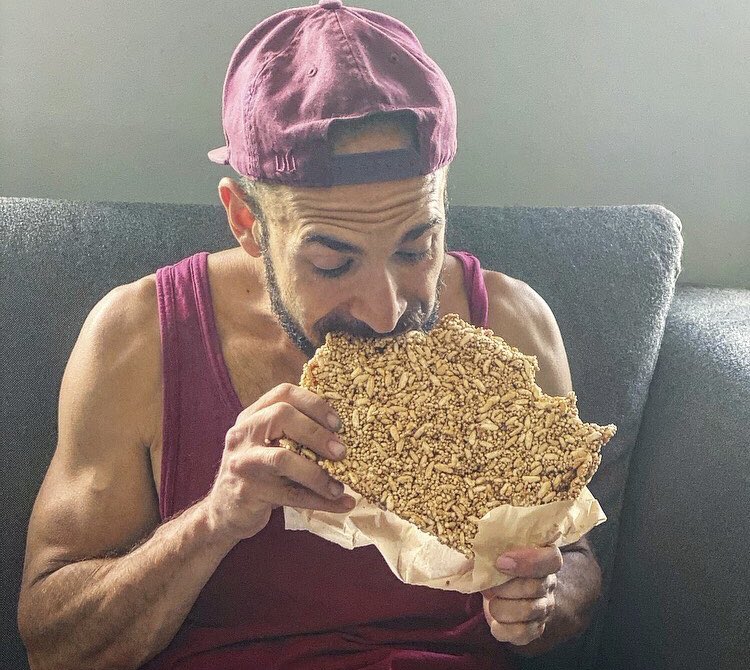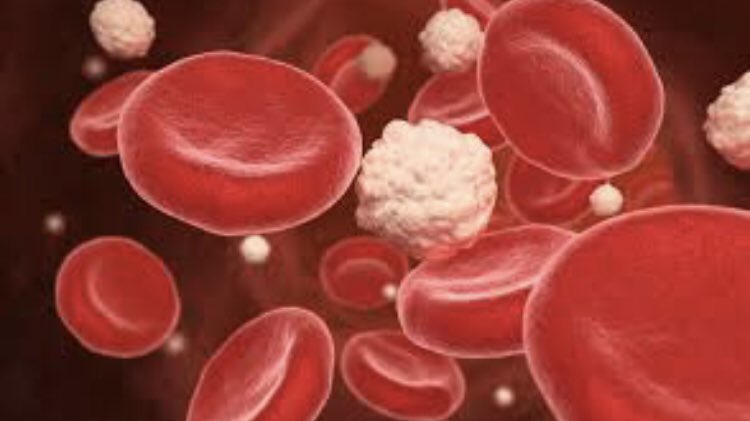
After months of restricting carbohydrates by following a ketogenic diet I began developing orthorexia, thinking carbs = make me sick or overweight.
Luckily I escaped the food-phobia and learned how/why I can consume carbs to my advantage.
Every RT = 1 fact about carbohydrates👇🏽
Luckily I escaped the food-phobia and learned how/why I can consume carbs to my advantage.
Every RT = 1 fact about carbohydrates👇🏽

First one is on the house.
All dietary carbohydrates are considered nonessential macronutrients.
Every other major class of nutrients contains multiple essential compounds.
All dietary carbohydrates are considered nonessential macronutrients.
Every other major class of nutrients contains multiple essential compounds.
Carbohydrates can be divided in three general groups:
1. Monosaccharides - the simplest form of carbohydrate
2. Oligosaccharides - saccharide composed of a small number of monosaccharides
3. Polysaccharides - >10 linked monosaccharides that form a polymer
1. Monosaccharides - the simplest form of carbohydrate
2. Oligosaccharides - saccharide composed of a small number of monosaccharides
3. Polysaccharides - >10 linked monosaccharides that form a polymer
The most common monosaccharides are single sugar groups like fructose and glucose👇🏽
Glucose: found in food + blood. It is the end product of carbohydrate metabolism and our major source of energy
Fructose: mostly found in fruit but also in other sweet foods, honey & table sugar
Glucose: found in food + blood. It is the end product of carbohydrate metabolism and our major source of energy
Fructose: mostly found in fruit but also in other sweet foods, honey & table sugar
The most common oligosaccharides are two-sugar or three-sugar links: maltose, sucrose and lactose 👇🏽
Maltose = glucose + glucose
Sucrose = glucose + fructose
Lactose = glucose + galactose
NOTE: galactose is a monosaccharide that’s less sweet than glucose
Maltose = glucose + glucose
Sucrose = glucose + fructose
Lactose = glucose + galactose
NOTE: galactose is a monosaccharide that’s less sweet than glucose
The most common polysaccharides refer to starches, glycogen and/or fiber.
These are long complex chains of linked monosaccharides👇🏽
These are long complex chains of linked monosaccharides👇🏽

There are two main forms of starches:
1. amylose [single long chain]
2. amylopectin [highly branched structure + fast digesting]
Plant cells make starches by joining monosaccharides together.
Starch made by animal cells is called glycogen, during the process of glycogenesis.
1. amylose [single long chain]
2. amylopectin [highly branched structure + fast digesting]
Plant cells make starches by joining monosaccharides together.
Starch made by animal cells is called glycogen, during the process of glycogenesis.
We can’t absorb polysaccharides, we first break them down into monosaccharides (glucose, fructose and/or galactose) and eventually released in the blood as glucose.
NOTE: Fructose and galactose is converted to glucose by the liver
NOTE: Fructose and galactose is converted to glucose by the liver

On average we move about 20g of glucose in our blood every hour. Our body prefers to keep this stable.
The glycemic index measures the rate of which an ingested food causes the level of glucose in the blood to rise.
The glycemic index measures the rate of which an ingested food causes the level of glucose in the blood to rise.

The less processed + higher the fiber a food the more complex its carb molecules usually are. This will take foods longer to digest.
Honey, sugar, candy, breakfast cereal = higher glycemic
Legumes, vegetables, ancient grains = lower glycemic
Honey, sugar, candy, breakfast cereal = higher glycemic
Legumes, vegetables, ancient grains = lower glycemic
All indigestible carbohydrates such as soluble + insoluble fibre and resistant starch are either partially digested by our G.I. bacteria and converted to short chain fatty acids or excreted.
Another measurement; the glycemic load.
The glycemic load is based on the glycemic index multiplied by the number of grams of carbohydrates in the serving.
The glycemic load is based on the glycemic index multiplied by the number of grams of carbohydrates in the serving.

While glycemic index and glycemic load determine glucose levels, they don't illustrate insulin response to a meal. For this we rely on the insulin index.
NOTE: High protein &/or high fat foods can stimulate greater insulin responses than high glycemic index foods produce! 🤯
NOTE: High protein &/or high fat foods can stimulate greater insulin responses than high glycemic index foods produce! 🤯
At a cellular level, proteins on the cell membrane grab glucose from the blood and transfer them in the cell.
Insulin tell these proteins* to move to the cell membrane so they're able to take the floating glucose and bring them into the cell.
* = the GLUT transporter family👇
Insulin tell these proteins* to move to the cell membrane so they're able to take the floating glucose and bring them into the cell.
* = the GLUT transporter family👇

Though dietary carbohydrates are non-essential we need glucose to transfer energy + to run our brain.
Our brains need 130g~ of glucose/day. Luckily, if carbohydrate consumption is too low #gluconeogenesis and #ketosis can provide what we need.
Our brains need 130g~ of glucose/day. Luckily, if carbohydrate consumption is too low #gluconeogenesis and #ketosis can provide what we need.
https://twitter.com/NutrientDieting/status/1395110832049213443?s=20
While all carbohydrates have the same fate ending as glucose, [and then possibly stored as glycogen or triglycerides] each create a unique effect in the body.
Some examples:
Some examples:
Cellulose is not used for energy. It binds to other things in our gastrointestinal tract. We actually excrete most of it.
A highly branched chain of amylopectin must be broken down and released slowly.
Sugar [sucrose, glucose, fructose] breaks down and released very quickly.
A highly branched chain of amylopectin must be broken down and released slowly.
Sugar [sucrose, glucose, fructose] breaks down and released very quickly.
Fiber, though classified as a carbohydrate we can't digest them. Our GI bacteria ferments fiber, producing fatty acids that can provide various health benefits.
Fiber comes in two forms:
1. Soluble
2. Insoluble
Fiber comes in two forms:
1. Soluble
2. Insoluble

Soluble fiber = water soluble. Its molecules will turn into a gel in water.
It's found in foods like: dried beans, nuts, peas, oats, barley, flax, chia, fruits like blueberries, banana, orange, tomato and veggies like, artichokes & carrots.
It's found in foods like: dried beans, nuts, peas, oats, barley, flax, chia, fruits like blueberries, banana, orange, tomato and veggies like, artichokes & carrots.
Insoluble fiber = found in plant's rigid cell walls. Help to ensure regular bowel movements.
It's found in foods like: root veggies, green veggies, seeds and some nuts.
It's found in foods like: root veggies, green veggies, seeds and some nuts.
You can almost consider 'resistance starch' as a third kind of fiber, as it too resists digestion & turns into fatty acids.
Some types occur naturally such as green banana and beans.
Other is starch that's cooked then cooled. Foods like cold cooked: oats, potato & rice/pasta.
Some types occur naturally such as green banana and beans.
Other is starch that's cooked then cooled. Foods like cold cooked: oats, potato & rice/pasta.
Fast-digesting carbohydrates [dextrose/glucose] can be useful for high-level athletes who need immediate refueling around training/competition.
Liver and muscle glucose up take is rapid, and the carbohydrates will go to replenishment and oxidation rather than storage.
Liver and muscle glucose up take is rapid, and the carbohydrates will go to replenishment and oxidation rather than storage.

With low-carb dieting consumption as low as 15g~ of carbohydrates per day can limit nitrogen loss in the body.
50g~ per day limits the need for the body to use amino acids for #gluoconeogenesis
50g~ per day limits the need for the body to use amino acids for #gluoconeogenesis
Some animal products contain carbs.
The lactose in milk and other dairy products is a disaccharide.
NOTE: If a person has lactose intolerance, their digestive system produces too little of an enzyme known as lactase. Lactase is needed to break down lactose.
The lactose in milk and other dairy products is a disaccharide.
NOTE: If a person has lactose intolerance, their digestive system produces too little of an enzyme known as lactase. Lactase is needed to break down lactose.

The name carbohydrate come from its chemical structure; carbon backbone with hydrogen and oxygen molecules attached.
“Carbo” means carbon and “hydrate” means water–H20 (hydrogen and oxygen).
“Carbo” means carbon and “hydrate” means water–H20 (hydrogen and oxygen).
Dietary carbohydrates affect fluid balance.
For every gram of stored carbohydrate [glycogen] 3 - 4g of water is also stored.
Higher-carbohydrate diets = store more water.
Lower-carbohydrate diets = store less water.
For every gram of stored carbohydrate [glycogen] 3 - 4g of water is also stored.
Higher-carbohydrate diets = store more water.
Lower-carbohydrate diets = store less water.
It takes 1 - 4 hours for partially digested food, water, acids & digestive enzymes to empty from the stomach into the small intestine.
Carbohydrates empty first. Followed by proteins, then fats and fiber.
Carbohydrates empty first. Followed by proteins, then fats and fiber.
The liver helps regulate carbohydrate stability in the body.
When blood glucose is high, the liver stores it as glycogen for later use.
When blood glucose is low, the liver provides glucose from said glycogen stores.
The liver also converts fructose and galactose to glucose.
When blood glucose is high, the liver stores it as glycogen for later use.
When blood glucose is low, the liver provides glucose from said glycogen stores.
The liver also converts fructose and galactose to glucose.

When we need stored glycogen, the body begins #glycogenolysis [breaking down stored glycogen to glucose]
The liver is able to use glycogen for various reasons: regenerate ATP, send to the brain or send to red blood cells in need.
Muscle glycogen can only be used in the muscle.
The liver is able to use glycogen for various reasons: regenerate ATP, send to the brain or send to red blood cells in need.
Muscle glycogen can only be used in the muscle.
Glycogenolysis is mainly stimulated by two hormones:
1. Glucagon, a peptide hormone, produced by alpha cells of the pancreas.
2. Epinephrine, also known as adrenaline. It responds to stress and intense exercise, mobilizing carbs for the "fight or flight" energy.
1. Glucagon, a peptide hormone, produced by alpha cells of the pancreas.
2. Epinephrine, also known as adrenaline. It responds to stress and intense exercise, mobilizing carbs for the "fight or flight" energy.
Unlike other carbohydrate pathways, the krebs cycle can breakdown all macronutrients into acetyl-CoA.
Depending how quickly the carbohydrates went through glycolysis, the mitochondria will convert some to most of those carbs.
If energy demand is high, some; if low, most.
Depending how quickly the carbohydrates went through glycolysis, the mitochondria will convert some to most of those carbs.
If energy demand is high, some; if low, most.

Oxaloacetate [also known as oxaloacetic acid] is a molecule involved in many metabolic processes.
When we transform glucose to pyruvate [the process of glycolysis] the body can then convert pyruvate to oxaloacetate.
So oxaloacetate = a byproduct of carbohydrate metoabolism.
When we transform glucose to pyruvate [the process of glycolysis] the body can then convert pyruvate to oxaloacetate.
So oxaloacetate = a byproduct of carbohydrate metoabolism.
Without adequate carbohydrate metabolism:
• oxaloacetate = deficient
• acetyl-CoA = accumulate
• krebs cycle = slows down
This is partly why so many feel low energy when starting a low-carbohydrate diet/decrease their carbohydrate intake.
• oxaloacetate = deficient
• acetyl-CoA = accumulate
• krebs cycle = slows down
This is partly why so many feel low energy when starting a low-carbohydrate diet/decrease their carbohydrate intake.
Different types of exercise/activity determines how we use energy/much energy is used by carbohydrates. 👇
https://twitter.com/NutrientDieting/status/1394672147231088644?s=20
• • •
Missing some Tweet in this thread? You can try to
force a refresh




